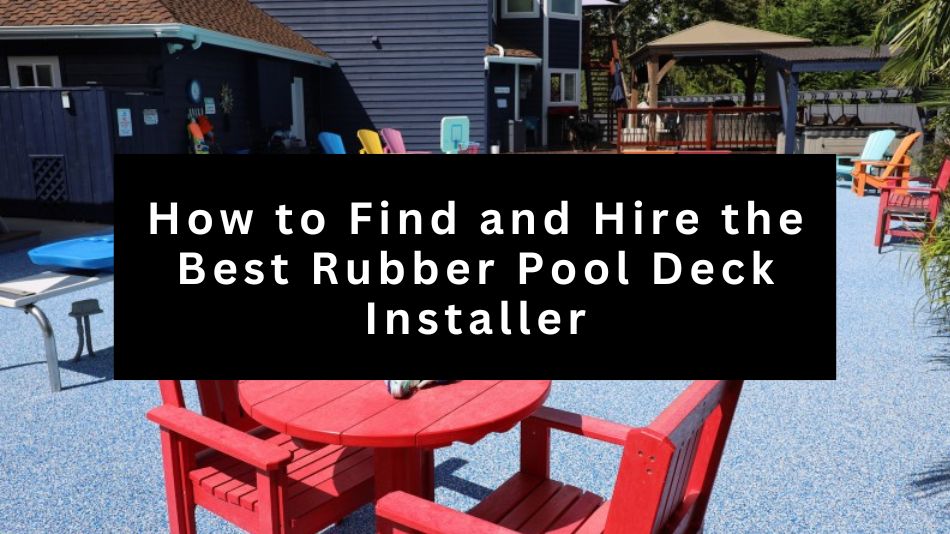Why Rubber Pool Deck Surfacing is Perfect for Outdoor Spaces
Picture this for a minute:
A soft, cool surface that grips your feet (and more importantly, your kid's) even after cannonballs.
The new surface is added right over your existing slab, tile, pavers, or stone without demolition or long delays. Start it on Wednesday and it is ready to use by Saturday!
With rubber surfacing, Installers hand-trowel every edge, shaping the material around drains and rails so the new layer flexes with the base year-round.
You end up with a cushioned, custom color blend that looks great. A safer surface, and something that will last for decades to come.
Sounds great, right?
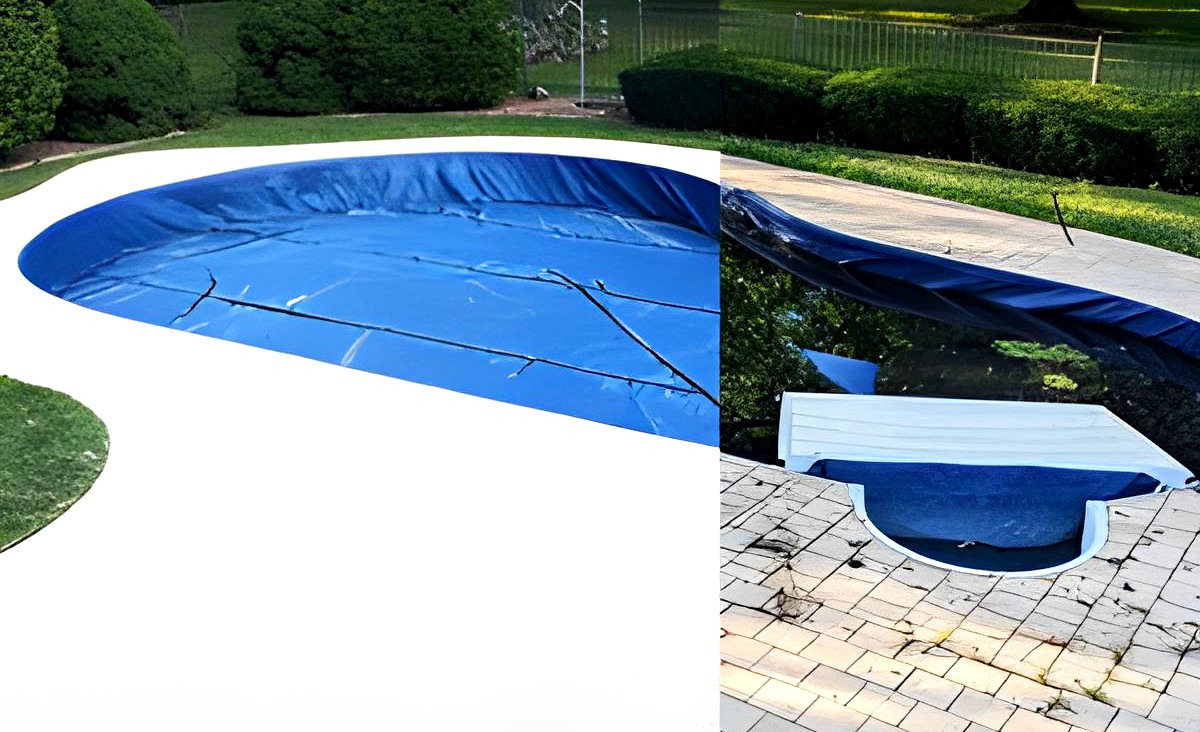
The Better Option for Pool Deck Repair
Now that you know what your getting, ask yourself:
Am I going to spend money on repairing a subpar pool deck or should I invest in a rubber pool deck?
We think the answer is simple.
See, rubber safety surfacing (at least ours here at Rubber Stone), retains color, is resistant to UV, doesn't fall apart from pool chemicals, and flexes during freeze-thaw cycles.
Our rubber surfacing is a proven formula that has been used for thousands of pool decks across Canada, the United States, Australia, and Mexico. In other words...
it works.
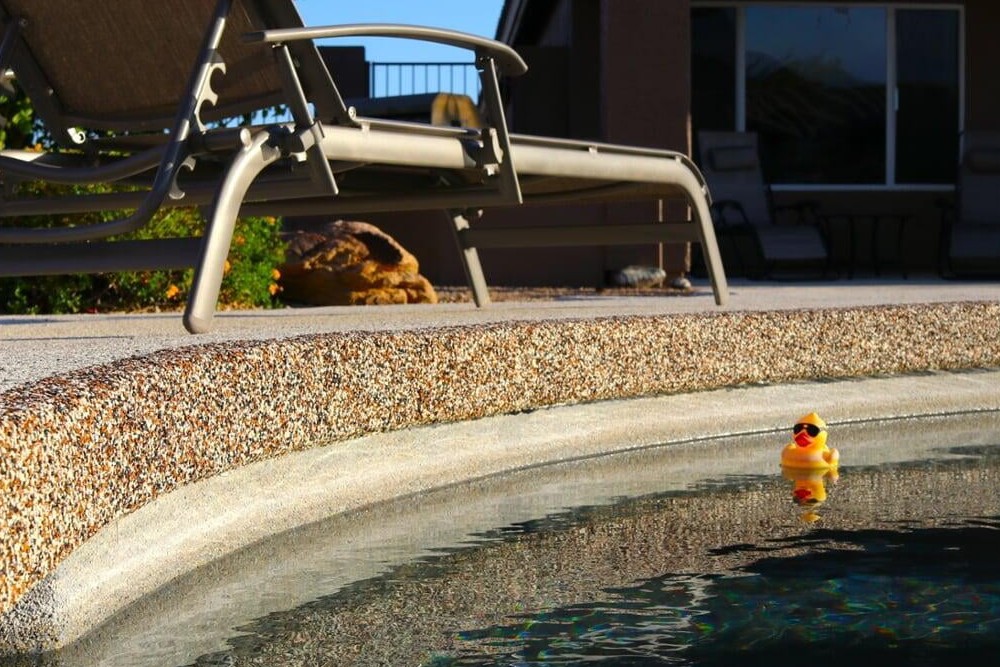
But before you Pick a Rubber Surfacing Contractor, you Should know...
We've got a bunch of Rubber Pool Deck Resources
Knowledge gives you leverage when it comes to finding and paying for the right pool deck. Begin with the Guide to Rubber Surfacing for Pool Decks: Why Rubber Stone is Best.
That article explains rubber surfacing (specifically for pool decks) in more detail. From slip resistance to temperature control. It also compares Rubber Stone to concrete, pavers, and tile in clear language.
Next, review the Cost Breakdown: How Much Does Rubber Resurfacing Cost in 2025? to understand price drivers before your estimates start coming in. If you don't see something we talked about - ask.
Finally, bookmark Rubber Surfacing Maintenance Tips: How to Keep Your Rubber Stone Looking New. A rubber pool deck is extremely easy to manage and maintain. This guide will help you keep your investment lasting well into the future.
Build Your Pool Deck Contractor Evaluation Checklist
Here's what you need to do to make sure you've got your i's dotted and your t's crossed:
- Photograph wide shots and close-ups of the deck to document existing conditions
- Note pooling water, uneven slabs, and control joints that might need attention before resurfacing
- List safety priorities like crumbling coping, worn steps, or missing handrails you want addressed
- Define color ideas and any custom logos or borders that match your vision
- Set a target completion date around events, rentals, or seasonal openings to guide scheduling
- Establish budget bands using the cost article as support during negotiations
- Shortlist certified installers from Rubber Stone dealer listings that cover your region
- Schedule site visits so each team inspects drainage, substrate condition, and sun exposure
- Request itemized proposals covering prep, materials, schedule, warranties, and optional financing
- Look for reviews online, verify references, ask if they have insurance, and ask about ongoing maintenance options.
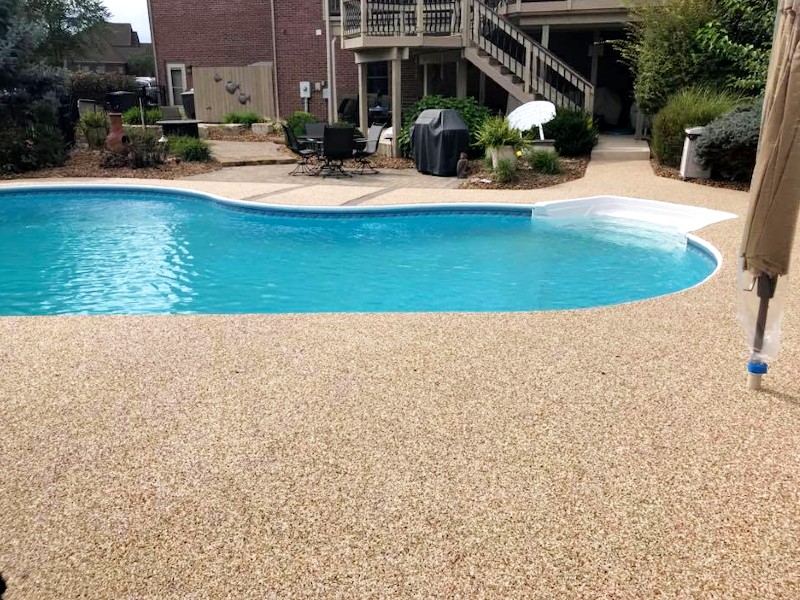
6 Red Flags to Look Out For When Considering the Right Contractor
-
Be cautious if an installer glosses over substrate repairs or moisture checks. Cutting corners today will lead to failures later. If they are willing to con you into paying them for a job, they probably won't return to fix it.
-
Many rubber pool deck installers buy their material directly from overseas sources and are not vetted or reputable. This is an area where Rubber Stone is completely different. Our entire supply chain, materials, and even installers are vetted, trained, tested, and consistent.
-
Don't go for vague warranty language. Ideally, you want to ensure the material and installation process is covered.
-
Check how they handle coping, rails, and adjoining patios. Clean transitions remove trip hazards and enhance durability. Ask for photo examples so you can see how it is done.
-
Avoid schedules that require full payment up front. Standard milestone payments protect both you and the contractor.
-
Trust communicators who respond quickly, share project photos, and explain each step clearly. Transparency builds confidence.
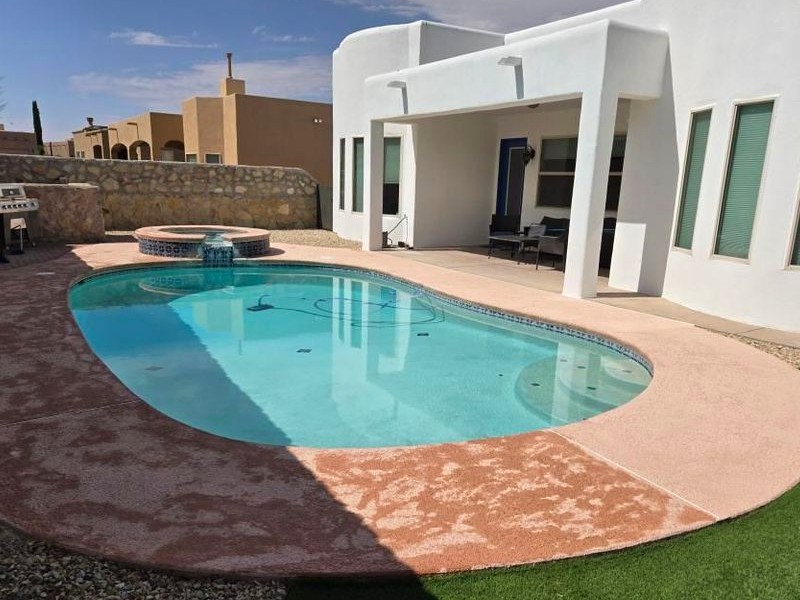
Before You Sign the Contract to start the Pool deck Transformation
Many people sign contracts or make agreements without knowing the full scope and details of what they are getting themselves into. We don't want that to happen with a new pool deck surface. So - we came up with a list of final things to do before signing on the dotted line.
- Compare quotes side by side. Is there a surface prep stage (especially if you've got damage)? How thick is the surface layer? What are the phases? How long will it take?
- Ask about project area, staging area and other logistics you'll want to get out of the way ahead of time.
- Verify drainage once the new surface is installed. With rubber surfacing, proper drainage will preserve the surface.
- Review financing options available. Many of our certified Rubber Stone installers offer them.
- Confirm the warranty is included in the contract. Make sure it is detailed.
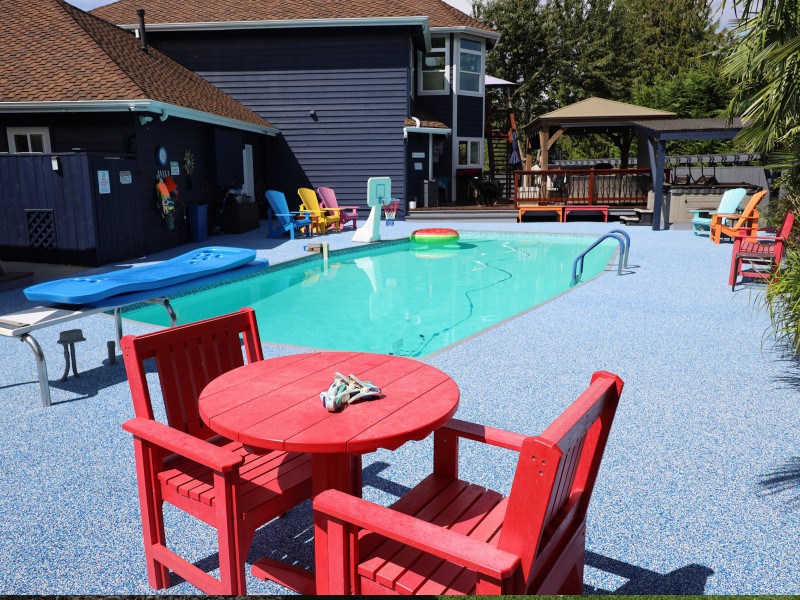
Working with your Contractor
The entire installation process should be quick. Expect a day or two depending on the size of your pool deck.
During that time, make sure your pets and kids are out of the work area. The last thing you want is your dog running through the semi-cured surface during the installation process.
Give the rubber surface installers room to work. There will be plenty of time for questions and answers at the end. Of course if you have an immediate concern, bring it up, but other than those one-off instances, your pool deck installation will go much smoother and quicker if you are not watching over their shoulders.

After your pool deck installation is complete
There are a few things you'll want to keep in mind after your rubber pool deck is installed.
- Give the newly finished surface a day or two to finish curing. Rubber surfacing doesn't take nearly as long as a concrete surface and that is one of the many reasons why we think rubber resurfacing is better than concrete.
- Maintaining your new pool deck is the key to protecting your investment. We highly recommend checking out our rubber surfacing maintenance post. If you don't want to mess with maintenance yourself, ask your installer about ongoing maintenance.
- If you start to notice any issues after installation, don't wait to notify your installer. Identifying any problems right away can make fixing things much quicker, easier, and less costly for everyone.
Wrapping Up
That's it for this article! We hope you find the information about hiring a contractor for your pool deck useful as you get the process started.
If you want a reputable rubber pool deck installer in your area, click the blue button below. All of the Rubber Stone installers across North America, Australia, and Mexico are certified after a multi-day hands-on training course. Our product is made in-house and we don't cut corners.
We look forward to working with you soon!
